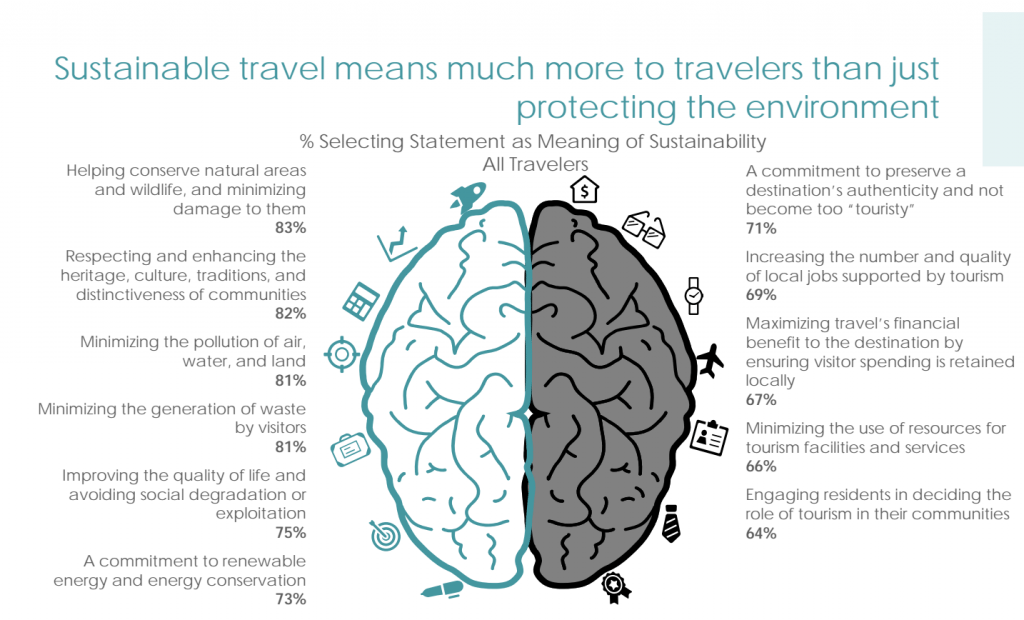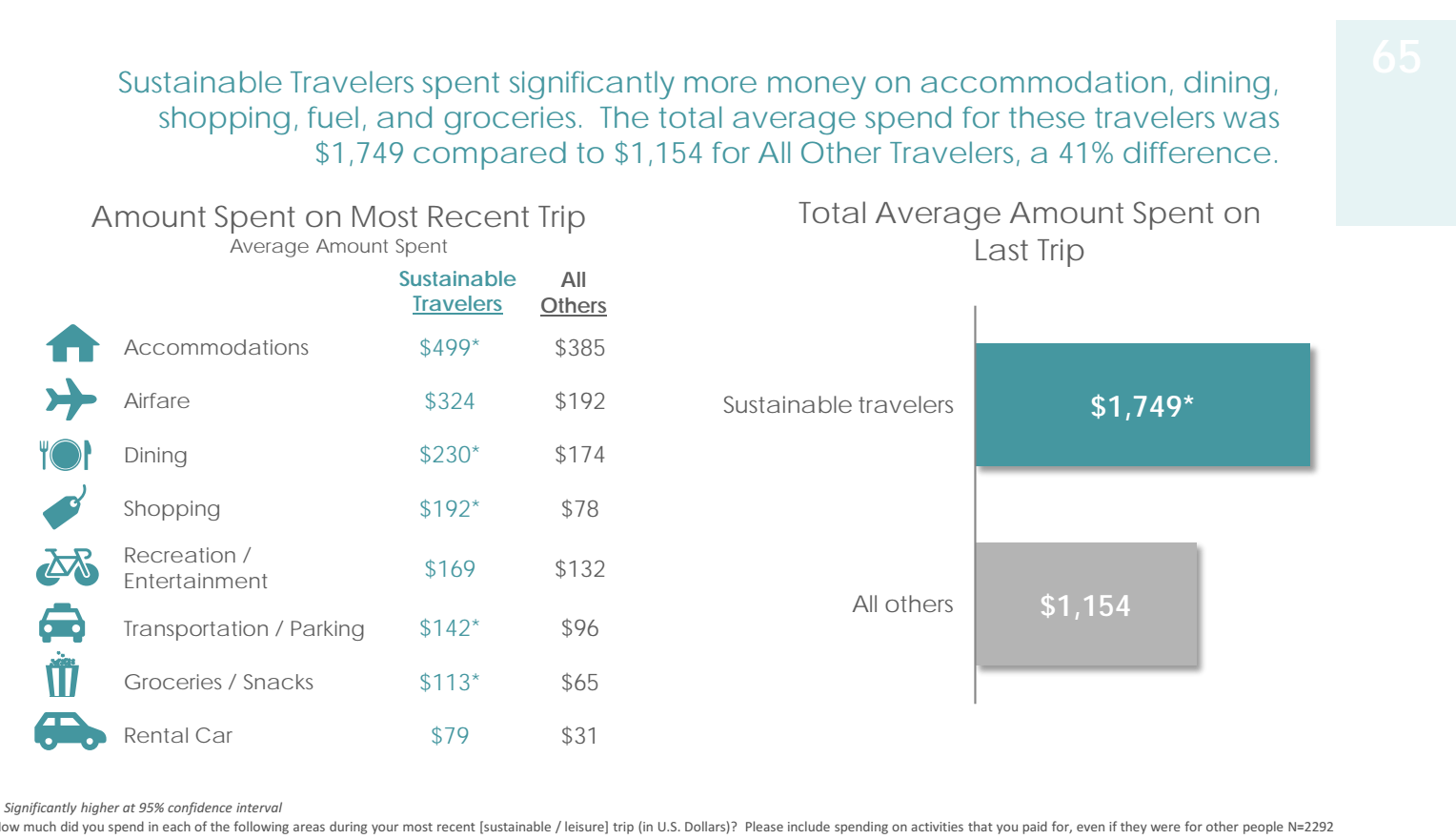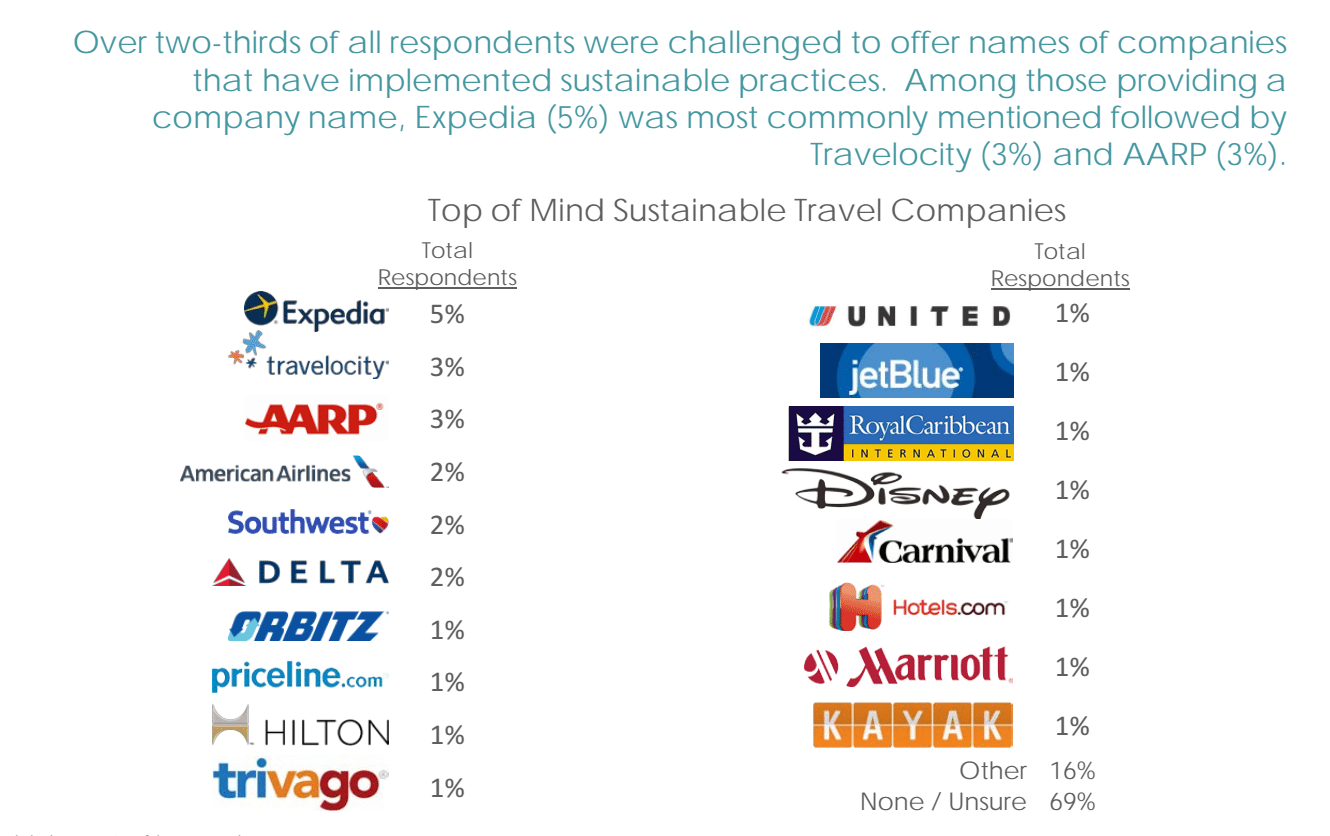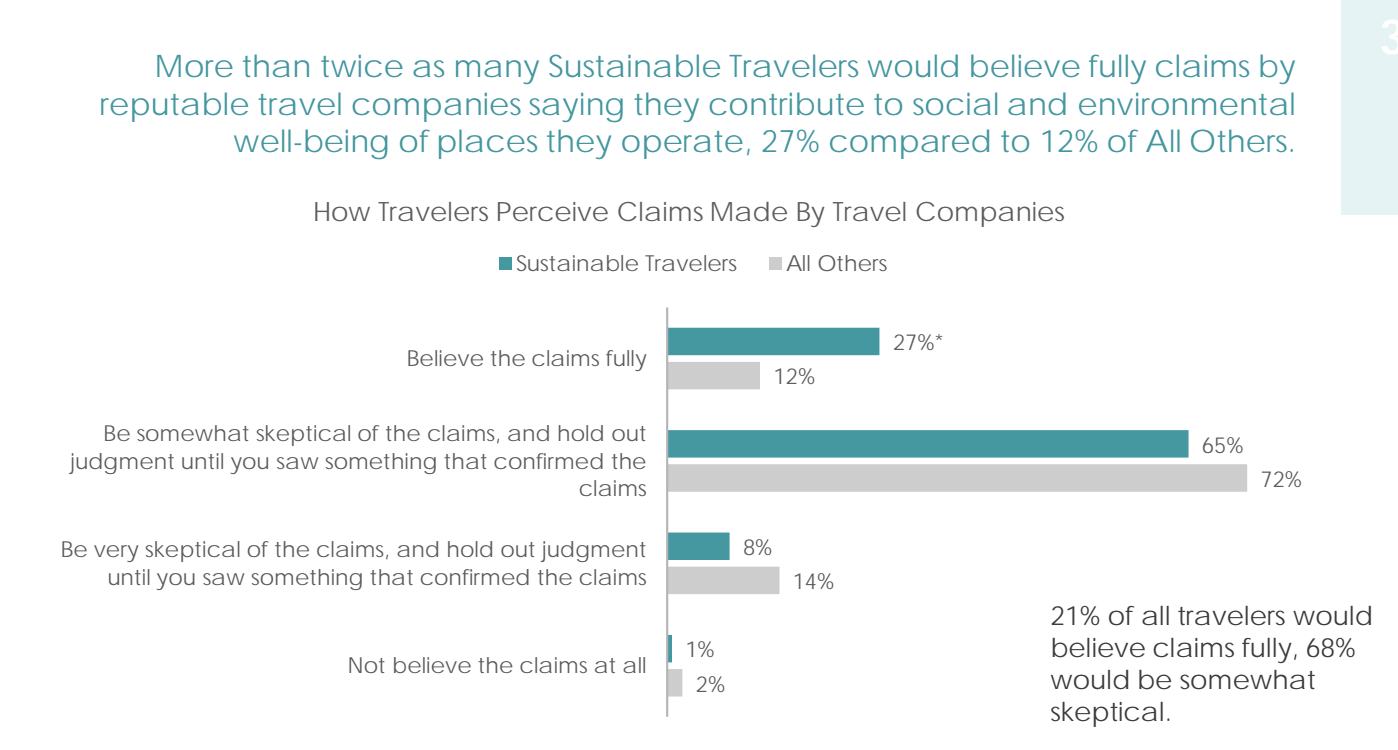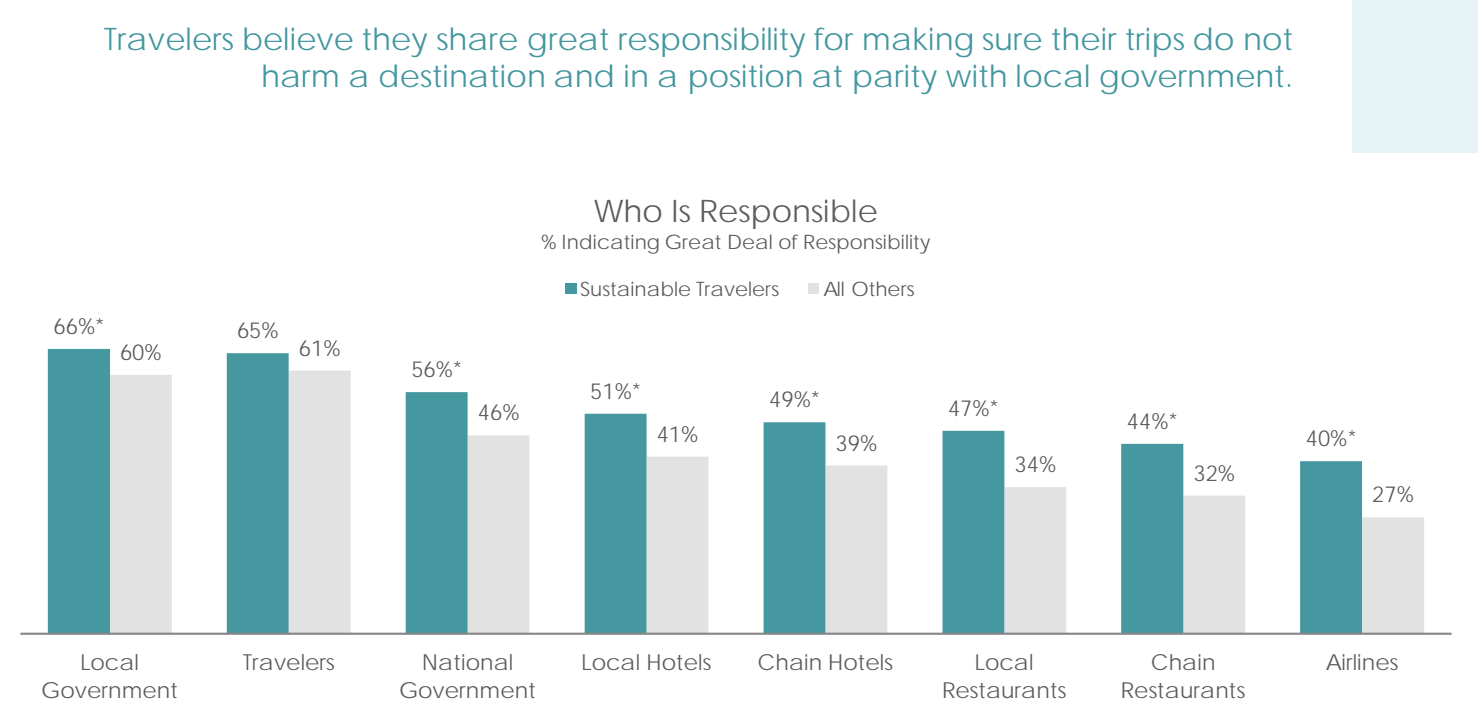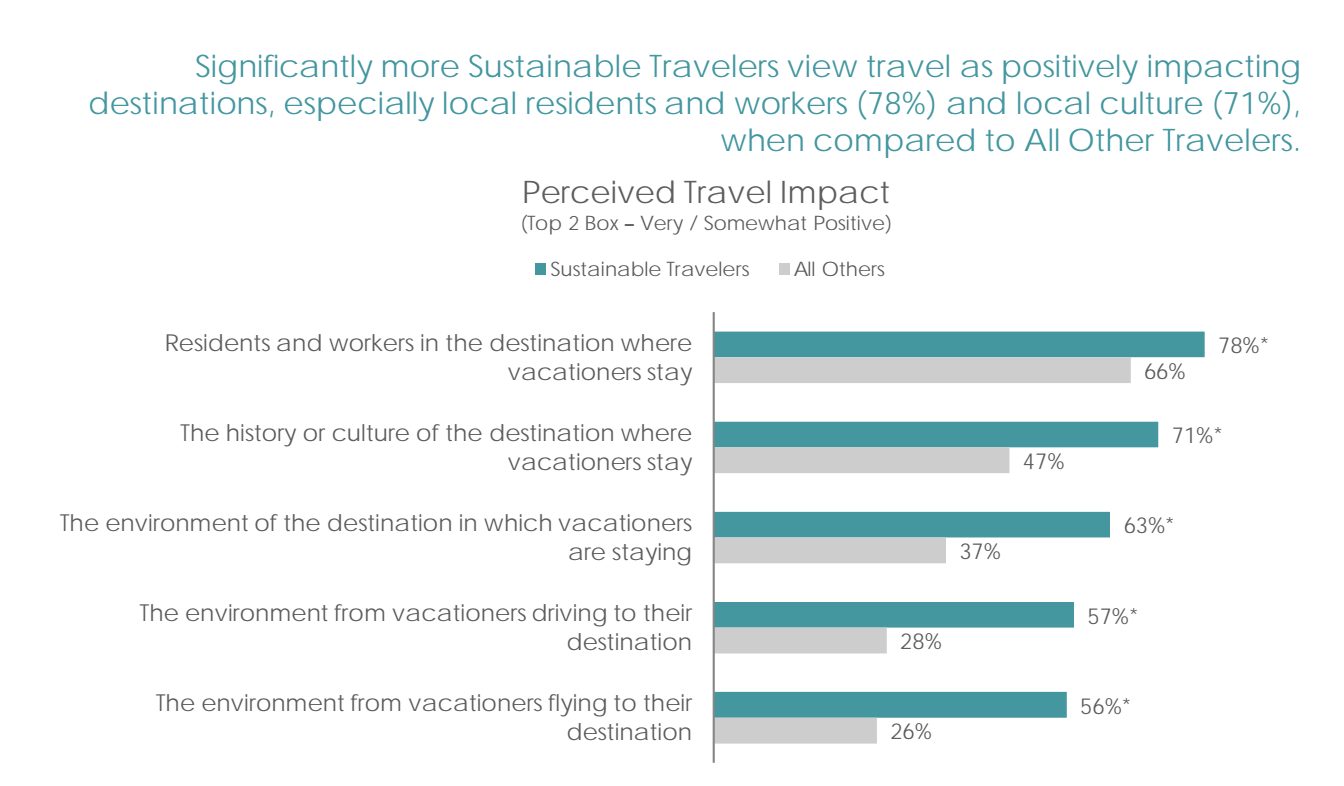Skift Take
Nearly one-third of the U.S. population identifies as sustainable travelers, but many of them are skeptical of brands' sustainability campaigns and iniatives. Proof and transparency are key for brands to get right if they want these big spenders and frequent travelers to buy into their flights, hotels or cruise lines.
Some 105.3 million U.S. leisure travelers, or 60 percent of all leisure travelers in the U.S., say that they are “sustainable travelers” — those concerned with how their travel impacts everything from a destination’s local economy to the environment.
That’s according to a new study from Mandala Research, a firm that studies unfamiliar or controversial data and trends in the travel industry. The study also found that, ironically, 64 percent of its survey respondents were unsure of what sustainability means when unaided by any definitions.
This has long been a challenge in the travel industry.
Mandala surveyed nearly 2,300 U.S. adults online between January 26 and February 3, 2016. Respondents took at least one trip during the past 12 months that was 50 or more miles from home with at least a one-night stay. About 60 percent of respondents were sustainable travelers and the rest were general leisure travelers.
Several travel brands tout their sustainability achievements and spend a lot of money in this area. But not all travelers are buying into it; Mandala found 68 percent of U.S. travelers are skeptical of these claims while 21 percent fully believe brands (see Chart 3 below).
The study showed sustainable travelers are between 38 and 57 percent more likely to book travel with brands based on their sustainable practices compared to 11 to 21 percent of non-sustainable travelers. Sustainable practices include donating profits to local communities and conserving natural resources.
The following chart depicts how travelers perceive sustainable tourism, with the highest percentage of respondents associating sustainability with the environment. The 11 definitions travelers chose from are all correct, varied meanings of sustainable tourism.
Though it’s clear that there’s no single, accepted definition for sustainable travel within the travel industry, said Laura Mandala, managing director of Mandala Research.
For example, the Costa Rica Tourism Board has used the term ecotourism to convey its connection with natural experiences while Royal Caribbean uses “sustainability” and has struggled to reduce greenhouse gas emissions for its fleet. And Intrepid Travel calls it responsible travel. All three terms under the sustainable tourism umbrella but too much terminology confuses travelers.
Brian Mullis, founder and CEO of Sustainable Travel International, which worked with Mandala Research on the study, said there’s too much emphasis on the word sustainability, “If you asked 10 people what sustainable travel means, they’d all define it differently. We think about sustainability through the lens of how travelers consider it, such as the authenticity that reflects the character of the destinations. They want to know that destinations are making a strong effort to conserve and protect natural resources.”
Regardless of how sustainable-minded some travelers are, they’re still considering their needs first, “Travelers don’t necessarily consider sustainability unless it benefits them, but they don’t necessarily use that word,” said Mullis.
Mandala said there’s too much “greenwashing” in the travel industry that doesn’t positively move travelers to consider brands.
“Hilton is growing veggies on some roofs of some hotels and making their own honey. But consumers are exposed to a lot more. They understand that Marriott’s ‘Made in the USA’ towels pledge only has so much impact. They’ve been in LEED certified buildings. Companies won’t be able to get away with superficial certifications that they have.”
Intrepid Travel recognized the need for more proof as it claims sustainability is one of its foundational pillars. The brand decided to end elephant rides on its tours in 2014 in response to travelers’ feedback. It also donated Nepal tour proceeds to that country following an earthquake last year. Intrepid followed up with some of its Canadian travelers on its Nepal tours by knocking on their doors to tell them how their money was used in addition to social media campaigns, said James Thornton, the company’s managing director.
Sustainable Travelers and Their Perceptions
Mandala and Ginny Binder, research director at Mandala Research, say brands should view sustainable travelers as representative of all generations and income levels.
About 46 percent of sustainable travelers are millennials between ages 25-34 but nearly one-third are baby boomers ages 55 and older and the average income for sustainable travelers is $70,600 while the average for all other travelers is $66,700.
Sustainable travelers also spend more than the general leisure travel population–sustainable travelers spent an average of $600 more on their last trip than other travelers. They also outspent general U.S. leisure travelers on accommodations, airfare, dining and shopping. Albeit, respondents indicated price and value are the most important factors when selecting a destination (see Chart 1).
Mullis also said the sustainable traveler population is much larger than he previously believed, “Historically people have said sustainable travel is a niche within the travel industry, but that’s not true anymore. You have so many CEOs talking about it and many brands want a piece of it.”
Chart 1: Sustainable U.S. leisure travelers outspend all other U.S. leisure travelers. Most sustainable travelers stayed in hotels and during the past year they took on average of 3.3 trips for leisure compared to 3.0 for all other travelers.
Chart 2: The travel brands that travels perceive as the most sustainable are mostly booking sites and airlines. That’s interesting considering booking sites like Expedia.com or Priceline.com are intangible brands that travelers don’t experience like a hotel, flight or cruise.
“Some travelers may have seen sustainable messaging from other brands on an online travel agency, for example, and that’s probably why they think of them as sustainable as a result,” said Mandala.
Chart 3: Some 65 percent and 72 percent of sustainable travelers and non-sustainable travelers, respectively, are skeptical of a brand’s sustainability claims.
Chart 4: Both sustainable and non-sustainable U.S. travelers hold local governments and travelers themselves as most accountable when it comes to preventing destinations from negative impacts from tourism.
Chart 5: Travelers perceive residents and workers and history and culture as most impacted by travel.
Source: Mandala Research
The Daily Newsletter
Our daily coverage of the global travel industry. Written by editors and analysts from across Skift’s brands.
Have a confidential tip for Skift? Get in touch
Tags: climate change, sustainability, tourism
Photo credit: A hiker in Svalbard, Norway. Basecamp Explorer / Facebook

